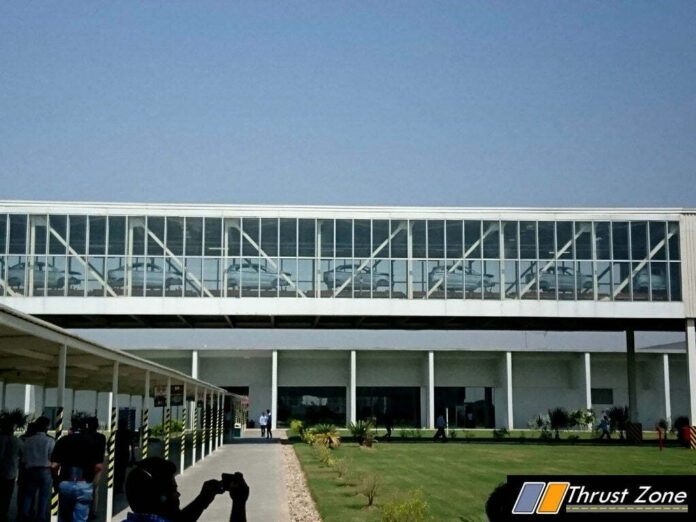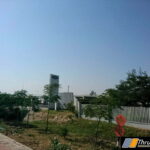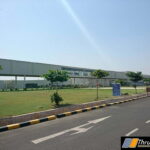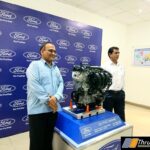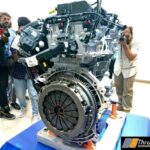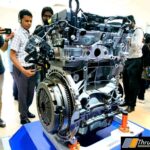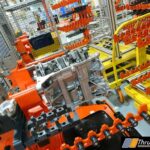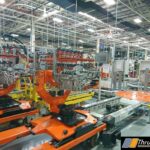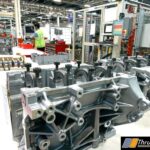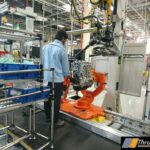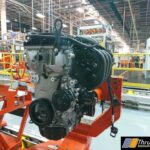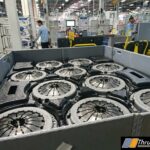We Visit The Ford’s Factory At Sanand to find out how the new petrol engine is made which comes in the new 2017 Ecosport Facility which has been priced really well!
With the next-gen 2018 Ford EcoSport that has arrived, I take this opportunity to talk about my recent visit to Ford’s plant at Sanand, Gujarat. Yes, this was the same visit (around a month back) that showed the Indian media the highly promising new three-cylinder 1.5 Liter Ti-VCT Petrol unit DRAGON series engine that makes 123ps and 150Nm of peak torque. Now, much to the Editor in Chief’s annoyance I had been delaying my take on this engine, its significance and what to expect from it. The truth is, today is really the right time to talk about it, with the new EcoSport almost here, this is where we all need to talk about this new engine, Ford’s commitment to the Indian market and its, yet ongoing efforts to keep the enthusiasm alive.
If you look back into the history of Ford Motor’s story of India thus far, you will be told of the series of brilliant cars that were an absolute hoot to drive and provided matchless driving pleasure in the segment. However, at the same time, you will also be told that almost all of them could also be termed as sales disappointments (a rather harsh thing to say, but yup, that was the case). Whether it be the classy Ford Escort or the ill-fated Ford Fusion (a car that was like 10 years ahead of its time), or those rare Mondeo’s or the Last of the Fiesta’s, car’s that were as viscerally exciting to drive as the baby beemers, if not more. Ford, to be true has only tasted true success in India with the first generation Figo in all those years, until EcoSport arrived in 2013 and changed the game, for good.
The idea behind my brief above about Ford in India is very simple, this American carmaker has been consistently churning out cars that have been driving enthusiast delight, regardless of them being sales successes or not. Ask anyone in the know of the industry and they will have most Ford cars in their ‘lovely-to-drive’ cars, some of them will have Fiat’s as well (but that’s another story for another day).
The reason you might ask? Well, first up, Ford has always had pretty good engines on offer in their cars, they have been, generally rev happy, responsive and yet never ever intimidating in nature. Combine this with the ‘towards-sporty-kind’ suspension setup that Ford has stuck to (gladly), having fun while driving Ford car’s has been among life’s good certainties.
This is a rare and bold way of doing cars in India, and maybe this is why Ford has also struggled a bit to get traction in our market. But it has not stopped their efforts to try and change the fairly evident fact, ‘India doesn’t like Great Cars!’ Maybe this is why, even when it was the almost do-or-die situation for them, they brought in the original EcoSport in the country with a choice of three engines, two out of which were Petrol Units.
Those were times when buying a diesel car was like a fashion, you didn’t drive your car for more than 10 km’s a month, yet you wanted the diesel! Evidently. The brilliant design of the car, its bang on pricing and that lovely 1.5-liter TDCi diesel catapulted the EcoSport into the sales records in the Indian market.
At the backdrop of this massive success, the two petrol units, the 1.5-liter 110PS four-cylinder motor, and the groundbreaking 1.0-Liter EcoBoost, kept working under the radar waiting for the insanity of diesel-mania to subside. The 1.5-Liter Petrol still found enough buyers to keep it in the game, the marvelous EcoBoost on the other hand, was mostly too advanced (and expensive) for the Indian masses. Ford’s marketing efforts also weren’t exactly designed to tell the world that the EcoBoost is what India truly needed. Well, the diesel was selling without an issue, why ‘waste’ marketing money on the EcoBoost, probably was the idea. Sad, but that’s how business work for most people.
This is where this new Dragon series engine comes into the picture. For Ford India, this new engine is a pretty big deal. And it is evident, since, they got to showcase this engine, their Make In India pledge and their confidence in Indian engineering before the new three-cylinder petrol went anywhere else in the world. India, is going to be the hub for this new engine for most parts of Ford’s global base and that is an extremely proud moment for everyone inside Ford India and for the Indian Industry as well.
Coming to the opportunity of visiting an automotive manufacturing plant, I have had my experiences with that sort of industry through my previous (years of) works with the industrial lubricants. Now, counting over 1000’s of plants I had visited, I was in a position to understand, analyze and comment on the Sanand plant with a slightly better back-of-my-head data. And yet, boy was I surprised! By far, Ford’s Engine assembly at Sanand is the most well-kept, astonishingly clean and advanced engine assembly I have ever visited.
As you would be figuring out with these pictures throughout the article, the attention to detail, flawless manufacturing commitment, advanced robotics, and a strict adherence to the great working environment are of paramount importance in the plant. You meet anyone in the plant ad you would genuinely feel that they are deeply connected and proud that they are associated with this manufacturing base of the American car maker.
If you talk about the details, spread across 460 acres of industrial land, not too far away from Ahmedabad, the Sanand plant saw over US$ 1 billion investment by Ford to create a state-of-the-art integrated manufacturing facility that became operational in March 2015. The plant helped, Ford India double its annual installed manufacturing capacity to 610,000 engines and 440,000 vehicles. The plant, along with the engine assembly also makes the Ford Aspire, the new Figo hatchback and Ford KA+ (only for exports) and employs more than 3000 people.
Coming back to this new engine, the 1.5-liter Ti-VCT (Twin Independent Variable Camshaft Timing) naturally aspirated three-cylinder petrol, will replace the old 4-cylinder Petrol unknit of similar capacity. It is both, more powerful and economical than the engine it replaces. Moreover, it is also much lighter, smaller and refined that the old unit. The gains are of the order of 10% in power output and 7% in torque ratings over the unit it replaces. This is a rather outstanding jump in outputs for these times, especially for a naturally aspirated engine. Ford says that this new engine does all that with the optimized bore and stroke ratios lending higher torque and better performance numbers.
Then there is the real smart Twin independent Variable Camshaft Timing (Ti-VCT) that is said to translate into faster throttle response and enhanced fuel economy at the same time. Neat. The new Ti-VCT system also allowed the engineers to make it possible for each intake and exhaust cam to function independently of each other with changes in the engine’s operating conditions. However, I was a bit saddened to see the presence of a 5-Speed tranny still. As an owner of the EcoBoost powered EcoSport myself, I understand how terribly a 6th gear is missed in that car. Tough I would reserve my take on this new engine till I drive it.
This new engine proves that Ford continues to spend big money in keeping the Indian car market at the cutting edge of engine technology advancements in the price points that actually matter. With the EcoBoost engine going off-shelf (I sincerely hope it will return), this new 1.5-L Ti-VCT unit promises to keep the powerful, responsive and ‘hoot’ to drive petrol EcoSport alive and therein Ford’s promise of keeping the enthusiasts alive as well.


